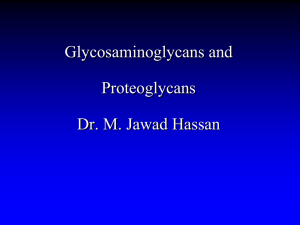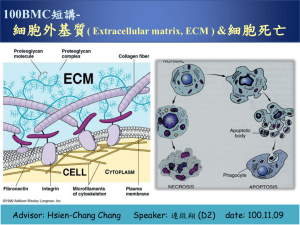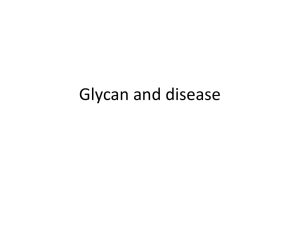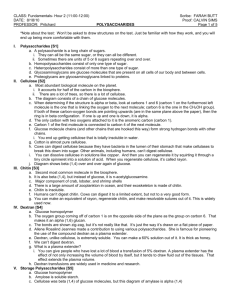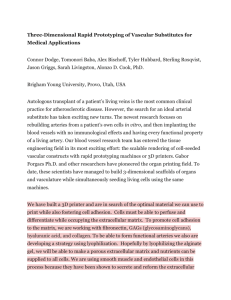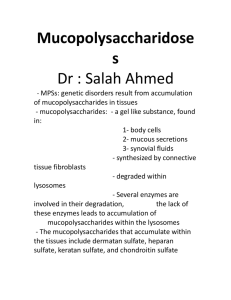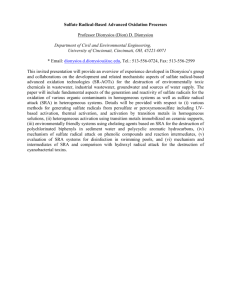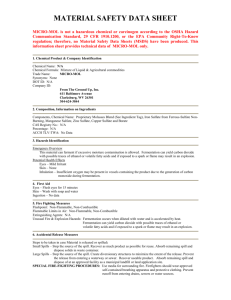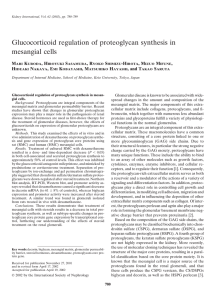Preface and Abstract - Scholars` Bank
advertisement
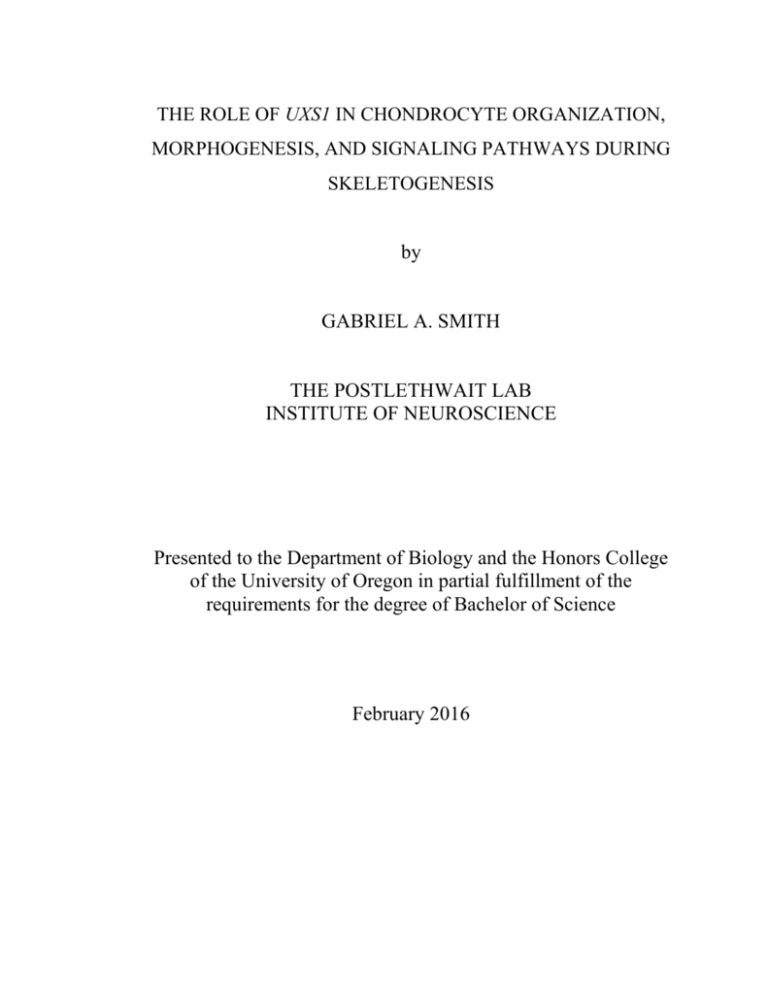
THE ROLE OF UXS1 IN CHONDROCYTE ORGANIZATION, MORPHOGENESIS, AND SIGNALING PATHWAYS DURING SKELETOGENESIS by GABRIEL A. SMITH THE POSTLETHWAIT LAB INSTITUTE OF NEUROSCIENCE Presented to the Department of Biology and the Honors College of the University of Oregon in partial fulfillment of the requirements for the degree of Bachelor of Science February 2016 Page | ii PREFACE This manuscript is formatted in accordance to the standards for submission guidelines of the journal Development1. There are a few formatting conventions that should be highlighted before perusal of this manuscript. Herein, the genes of model organisms like zebrafish and chicken are in lower-case italics (uxs1). Human genes are all capitals in italics (UXS1). Functional proteins or enzymes are capitalized with no italics (Uxs1). ABSTRACT The role proteoglycans play in molecular-genetic mechanisms of skeletogenesis is not completely understood. UDP-glucuronic acid decarboxylase 1 (Uxs1) converts UDP-glucuronic acid to UDP-xylose which is used by xylosyltransferase 1 to initiate assembly of a common tetrasaccharide linker critical to the biosynthesis of chondroitin sulfate, dermatan sulfate, and heparan sulfate proteoglycans, all of which are found in abundance within the extracellular matrix of cartilage. In this paper, we present two alleles, hi3357 and mow, that have mutations in uxs1. Zebrafish embryos with uxs1 mutations presented an absence of Alcian staining from cells in the pharyngeal cartilages. Fluorescent confocal microscopy revealed improper chondrocyte organization and morphogenesis in cartilage elements of the neurocranium and pharyngeal skeleton. Additionally, we observed reductions in Alizarin red staining at endochondral and intramembranous ossification centers indicating improper bone development. Whole-mount in situ hybridization experiments revealed uxs1 expression to be ubiquitous in developing embryos until 2 dpf and thereafter localized to the 1 These guidelines can be found online at http://www.biologists.com/web/submissions/dev_information.html Page | iii pharyngeal skeleton, suggesting a critical role for uxs1 expression during skeletogenesis. These results suggest that chondrocyte organization and morphogenesis, endochondral ossification, and intramembranous ossification are all dependent upon uxs1 function. In mutants homozygous for uxs1hi3357 and uxs1mow, wheat germ agglutinin staining revealed a reduction in proteoglycans in the extracellular matrix. Moreover, antibodies against heparan sulfate revealed deletion of heparan sulfate proteoglycans in the pharyngeal cartilage elements. The deletion of heparan sulfate proteoglycans in uxs1 mutants suggests that Wnt, Fibroblast growth factor, or Hedgehog signaling cascades may be disrupted as previously shown to occur in the fruit fly Drosophila. These findings reveal an absence of UDP-xylose dependent proteoglycans from the extracellular matrix due to mutations in uxs1. Experiments also showed a deletion of type II collagen from the extracellular matrix of chondrocytes, suggesting a role for Uxs1 or proteoglycans in the secretory or localizing mechanisms. Additionally, expression of col10a1 was absent from endochondral ossification centers and reduced at intramembranous sites, suggesting that uxs1 is necessary for proper reciprocal signaling pathways between perichondrial cells and chondrocytes critical for bone formation. Thus, we conclude that UDP-xylose dependent proteoglycans are absent in uxs1 mutants which is altering the composition of the extracellular matrix and disrupting reciprocal signaling between cells. This study provides new insight into the role proteoglycans play in skeletogenesis and the evolutionarily conserved role of uxs1 across life on earth. Page | iv ACKNOWLEDGEMENTS Special thanks to: Nathan Tublitz, and Joseph Fracchia for the advising on this manuscript; Yilin Yan, Xinjun He, Ruth BreMiller, Zac Wood, Amber Starks, and Amanda Rapp for assistance in this project; Amy Singer and John Postlethwait for being incredible mentors who have taught me everything I know. This work was supported by NIH grant: Resources for Teleost Gene Duplicates and Human Disease. NIH Grant Number: 5R01RR020833-03, UO Grant Fund Number: 212180 Page | v TABLE OF CONTENTS ii: Preface ii: Abstract iv: Acknowledgements v: Table of Contents 1: Introduction 2: The mechanism of skeletogenesis2 in vertebrates 3: The role of extracellular matrix macromolecules in chondrogenesis 4: Defects in proteoglycan-mediated pathways can lead to serious problems during embryogenesis and later in life 5: Skeletogenesis and dysgenesis3 are dependent upon molecular-genetic networks that establish reciprocal signaling pathways 7: The mechanism of proteoglycan biosynthesis 10: Understanding molecular-genetic networks involved in skeletogenesis 12: Approaches to investigate the molecular-genetic defect in mow 13: Results 13: Chondrogenesis and osteogenesis require mow function 17: Identification of the molecular genetic defect of mow 20: Characterization of the molecular genetic defect of mow 23: Conserved syntenies for uxs1 in human and zebrafish genomes 25: The uxs1 expression4 pattern during zebrafish development 27: Craniofacial defects of uxs1mow and uxs1hi3357 31: Both uxs1hi3357 and uxs1mow disrupt type II collagen (Col2a1) localization to the extracellular matrix 32: Uxs1hi3357 and uxs1mow disrupt col10a1 expression 34: Proteoglycans are reduced in uxs1hi3357 and uxs1mow 2 Skeletogenesis is a term for the process by which cartilage and bone develop in vertebrates to make the skeleton figure. 3 Skeletal Dysgenesis is the breakdown of skeletal elements later in adult life. 4 Expression is a term used for the transcription of a gene from the DNA template into a messenger RNA transcript. Page | vi 35: Heparan sulfate proteoglycans are absent in homozygous uxs1hi3357 and uxs1mow 38: Uxs1 disruption does not affect expression of reciprocal signaling molecules known to be involved in skeletogenesis 39: Uxs1 disruption does not appear to alter expression of runx2 or sox9 40: Expression of uxs1 is not regulated by sox9 41: Discussion 41: Evaluation of the molecular-genetic defect of uxs1hi3357 and uxs1mow 43: Evaluating the neurocranial and pharyngeal skeleton defects in uxs1hi3357 and uxs1mow 44: The role of uxs1 in proteoglycan biosynthesis and localization 46: The role of uxs1 in skeletogenesis 48: Heparan sulfate proteoglycan deletion in uxs1hi3357 and uxs1mow suggests evidence for disruption of FGF, Wnt, and Shh signaling cascades 52: The evolutionarily conserved role of proteoglycans and uxs1 53: Experimental Procedures 53: Alcian blue and Alizarin red staining of zebrafish 54: Mapping, cloning, and identification of mow 56: RNA extraction assays 56: RT-PCR protocol for uxs1 message 57: BODIPY®FL C5-ceramide confocal microscopy 58: Tg(fli1:EGFP)y1 and Alizarin red dual-channel confocal microscopy 58: Whole-mount in situ hybridization 59: Whole-mount and dissections of wheat germ agglutinin staining 59: Whole-mount antibody staining 60: References

